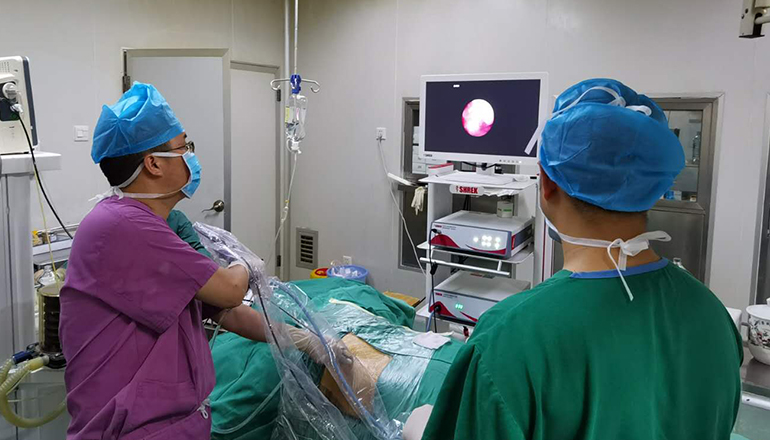- Shanghai, China
- [email protected]
- +86-21-58189111
Cystoscopy is a minimally invasive surgical procedure that allows urologists to visualize the bladder and urethra using a cystoscope, a thin and flexible instrument equipped with a camera and a light source. To perform a cystoscopy, several endoscopic equipment pieces are necessary.
Cystoscope: The cystoscope is the main instrument used in cystoscopy surgery. It is a long, narrow tube with a light source and a camera at the end that allows the surgeon to visualize the inside of the bladder and urethra. The cystoscope comes in various sizes and shapes, depending on the patient's age, gender, and the purpose of the procedure. The cystoscope can be rigid or flexible, and its tip can be straight or curved.
Light source: The cystoscope requires a high-intensity light source to illuminate the bladder and urethra during the procedure. The light source can be an external light source that connects to the cystoscope or an integrated light source that is built into the cystoscope.

Camera system: The camera system consists of a camera head that is attached to the cystoscope and a video processing unit that receives and displays the images. The camera system can be analog or digital, and it can produce standard definition or high definition images. The camera system can also have advanced features, such as zoom, focus, and white balance, that enhance the image quality and facilitate the diagnosis and treatment.
Insufflation system: The insufflation system is used to inflate the bladder with sterile water or saline to create a clear and distended view of the bladder and urethra. The insufflation system can be manual or automated, and it can control the pressure and flow of the fluid to prevent overdistension or discomfort for the patient.
Irrigation system: The irrigation system is used to flush the bladder with fluid to remove debris, blood, or mucus and maintain a clear and clean view of the bladder and urethra. The irrigation system can be gravity-fed or pressure-regulated, and it can deliver various fluids, such as saline, antibiotic solution, or contrast media.
Biopsy forceps: The biopsy forceps are used to take a small sample of tissue from the bladder or urethra for histological examination. The biopsy forceps can be straight or angled, and they can be operated manually or with a mechanical device.
Stents or dilators: Stents or dilators may be necessary in certain cases to expand or support the urethra or bladder, or to remove a blockage or stone. These instruments can be inserted through the cystoscope or through a separate working channel.
In summary, cystoscopy surgery requires a combination of specialized endoscopic equipment, including a cystoscope, a light source, a camera system, an insufflation system, an irrigation system, biopsy forceps, and stents or dilators, depending on the specific indications and goals of the procedure. Proper selection, use, and maintenance of these instruments are essential to ensure the safety, efficiency, and effectiveness of the cystoscopy surgery.
Leave a Comments